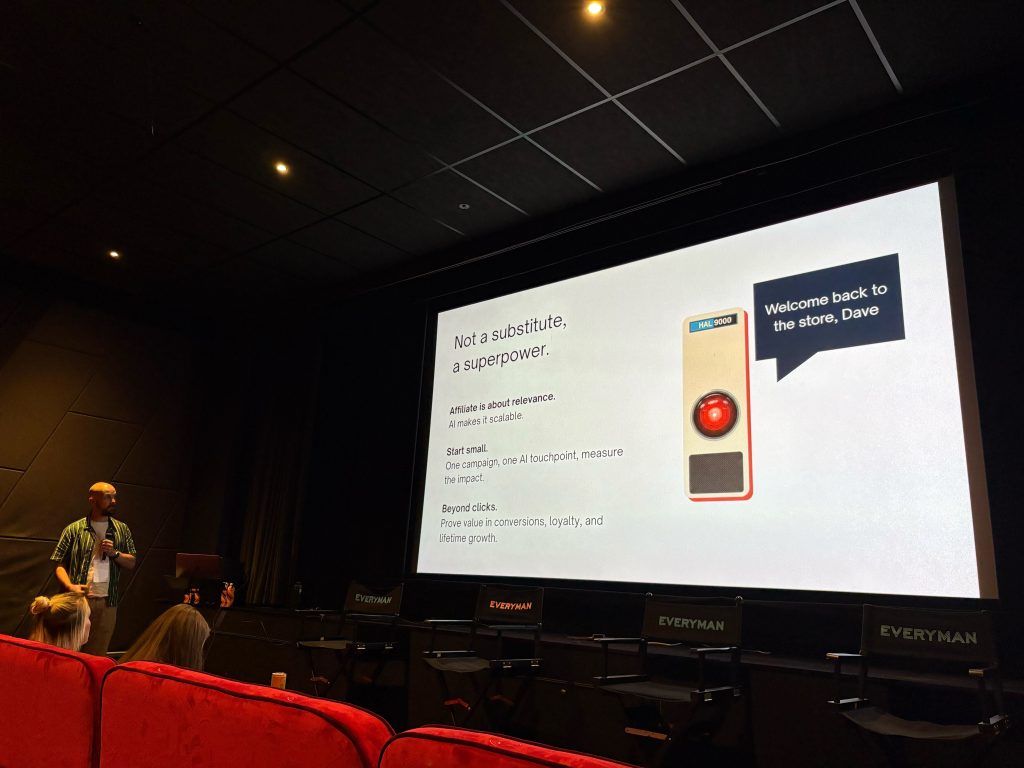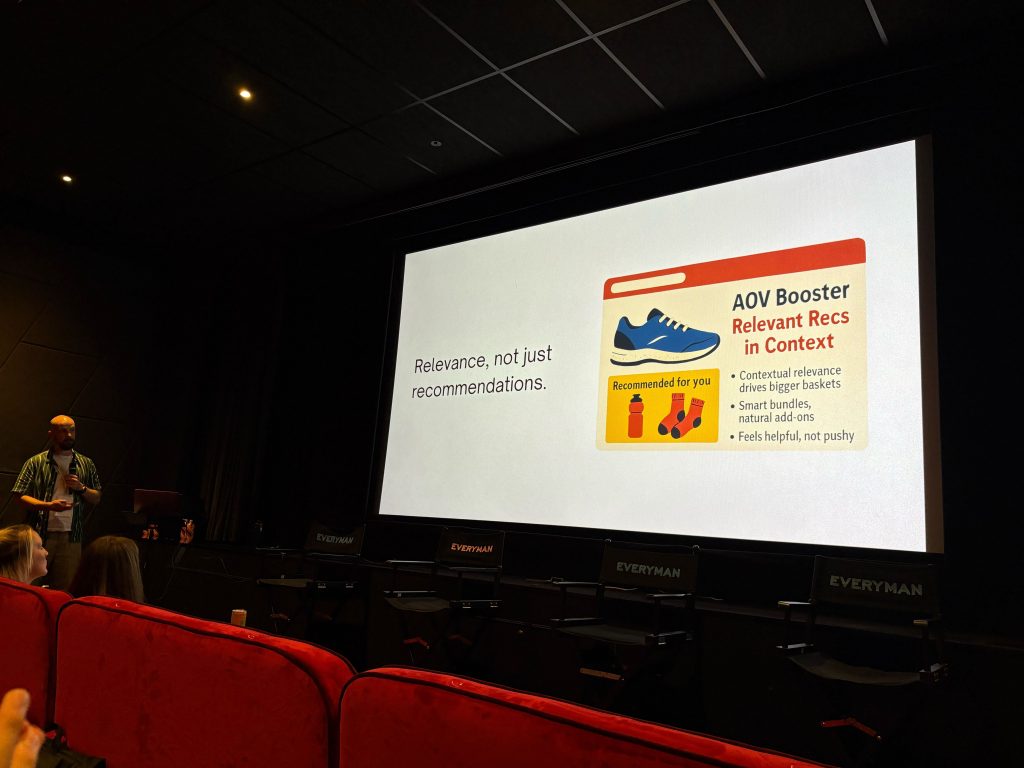intent.ly Live! 2025: Enhancing Shopper Journeys With A.I.

A.I. is everywhere. Everyone is using it. Everyone is asking what is next and wanting to be involved in competing for the best implementation. A.I.’s expansion into the marketing scene, and brands’ race to the top is creating questions around how human collaboration compares. “A lot of the conversation is about replacing people’s jobs.” People are afraid something sacred or sincere, about our own abilities, is being actively threatened.
At this year’s intent.ly Live!, Al Ryrie, Founder of HelpMeChoose A.I., explored a fresh take on how brands can use A.I. as an enabler, not a replacement. As he explained, “A.I helps humans do more – not less.” His session, “Enhancing Shopper Journeys With A.I.,” focused on how marketers can combine human creativity and intelligent automation to improve decision-making, customer experiences, and ultimately conversions.
Facing the Problem
SmartChoice, a joint venture between intent.ly and HelpMeChoose A.I., is a generative AI-powered product recommendation guide, built to enhance the customer journey through intelligent interaction. Ryrie explained that SmartChoice uses A.I. to personalise experiences and turn consideration into confident conversion.
In a world where we often have “too much choice and too little time”, creating decision and choice paralysis, A.I. can assist us with deciding whether or not to make a purchase. Ryrie challenged brands to ask – how can A.I. help us make decisions more efficiently?
He highlights three key shopper expectations users are presenting, which A.I. tools have the power to solve:
- Personalisation – “71 % of customers expect companies to deliver personalised interactions.”, McKinsey 2021
- Speed and convenience – “72 % of consumers say they will remain loyal to companies that deliver faster service.”, Salesforce 2023
- Guidance and recommendation – “67% of customers say they’d use A.I. to find the best prices, and 56% want help comparing products.”, YouGov 2025

How can A.I. Guide the Shopper?
- Awareness – Intelligent targeting, A.I. lookalike modelling and dynamic creatives.
- Discovery – Guided recommendations allow customers to discover new products.
- Decision – Simplifies exception handling by answering crucial “does it do this one thing?” moments.
- Conversion – Harnesses massive amounts of data to reveal opportunities and guide smarter improvements.
“Product quizzes have been around for a really long time”. However, Ryrie explained how A.I. has drastically improved them as it allows for greater levels of flexibility: “We can work with any number of product feeds and any number of customers”. Not only is the reach better in terms of business size, but it generates a substantial level of detail. Ryrie states “The personalisation is on a one-to-one level in a way that we couldn’t do prior to generative A.I..” Additionally, the speed of solutions like SmartChoice’s configurability is unmatched – it can easily be tailored and built out in different areas or facets of a customer experience.
Data Beyond What We’ve Seen Before
A.I. in ecommerce is a valuable data tool, providing insights that may not have previously been discovered. He states “It is very powerful in terms of data generation which wasn’t possible before and which can be fed back into everything else.” When gathering data through targeting different audiences, the behaviour of each segment produces amazing results as it is personalised at each stage. For example, SmartChoice answers questions that improve future business decisions and informs strategy. Ryrie exemplifies these as “Are we recommending the right things? Are we in the right place? Are they looking for something else? What does that tell us about the journey, that we can do better?”
How Relevance Rules
A.I. as a mechanism has always been about relevance. Ryrie explained that “You don’t get performance if the journey isn’t relevant to the customer.” People are under pressure to utilise A.I. because it is widespread and competitive. However, it is a futile addition unless thoroughly considered and relevant in implementation. Brands should consider using A.I. for its proven, unique qualities such as compatibility, intelligent bundling and prediction. It doesn’t have to be something radically new, but addressing a known issue – executed in a way that is relevant and flexible.
Why Segmentation Makes Strategy
Segments are a crucial part of building a guided journey with A.I., as they connect channels and tools back together. Existing segments must be prioritised as a foundation to build questions and answers upon, in the journey. This ensures “we’re feeding into existing activity so the data and customer profiles that are generated, can be taken back and used to power other areas.” This first-party data empowers companies to produce long-term strategies, in which users are creatively re-engaged. It’s not just a stand-alone tool – A.I. has the power to fundamentally improve a brand’s customer lifetime value.
Starting Isn’t Scary
Starting with A.I. might feel intimidating, but Ryrie’s advice is to “Start really small. A single campaign can be a great touchpoint to explore and see what comes back.” Ultimately, his message lies in the fact that blending A.I. technology with creativity and knowledge is the most effective approach. He follows with “A.I. doesn’t replace the thinking process of a business. There is a lot of historical knowledge there, about what works.” It doesn’t have everything – human originality and experience need to be fed in. Finally, reinstating that “it’s not a substitute for anything, it is a super-power that enables all of those things that we do already.”
Interested in how intent.ly SmartChoice might work for you? Book a demo with our team here.
Thanks again to Al and all our clients and partners for joining us at intent.ly Live! – you can read more insights from the day on our journal, including:

Patience is intent.ly’s marketing executive, with a passion for creative content marketing and social media strategies.
